Evolutionarily conserved Tbx5- Wnt2/2b pathway orchestrates cardiopulmonary development
- PMID: 30352852
- PMCID: PMC6233116
- DOI: 10.1073/pnas.1811624115
Evolutionarily conserved Tbx5- Wnt2/2b pathway orchestrates cardiopulmonary development
Abstract
Codevelopment of the lungs and heart underlies key evolutionary innovations in the transition to terrestrial life. Cardiac specializations that support pulmonary circulation, including the atrial septum, are generated by second heart field (SHF) cardiopulmonary progenitors (CPPs). It has been presumed that transcription factors required in the SHF for cardiac septation, e.g., Tbx5, directly drive a cardiac morphogenesis gene-regulatory network. Here, we report instead that TBX5 directly drives Wnt ligands to initiate a bidirectional signaling loop between cardiopulmonary mesoderm and the foregut endoderm for endodermal pulmonary specification and, subsequently, atrial septation. We show that Tbx5 is required for pulmonary specification in mice and amphibians but not for swim bladder development in zebrafish. TBX5 is non-cell-autonomously required for pulmonary endoderm specification by directly driving Wnt2 and Wnt2b expression in cardiopulmonary mesoderm. TBX5 ChIP-sequencing identified cis-regulatory elements at Wnt2 sufficient for endogenous Wnt2 expression domains in vivo and required for Wnt2 expression in precardiac mesoderm in vitro. Tbx5 cooperated with Shh signaling to drive Wnt2b expression for lung morphogenesis. Tbx5 haploinsufficiency in mice, a model of Holt-Oram syndrome, caused a quantitative decrement of mesodermal-to-endodermal Wnt signaling and subsequent endodermal-to-mesodermal Shh signaling required for cardiac morphogenesis. Thus, Tbx5 initiates a mesoderm-endoderm-mesoderm signaling loop in lunged vertebrates that provides a molecular basis for the coevolution of pulmonary and cardiac structures required for terrestrial life.
Keywords: Hedgehog signaling; TBX5; Wnt signaling; heart development; lung development.
Conflict of interest statement
The authors declare no conflict of interest.
Figures
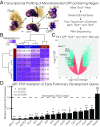
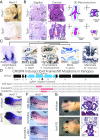

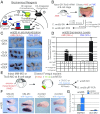
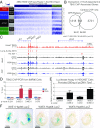
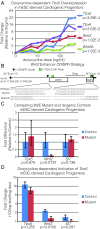

Similar articles
-
Tbx5 drives Aldh1a2 expression to regulate a RA-Hedgehog-Wnt gene regulatory network coordinating cardiopulmonary development.Elife. 2021 Oct 13;10:e69288. doi: 10.7554/eLife.69288. Elife. 2021. PMID: 34643182 Free PMC article.
-
Tbx5-hedgehog molecular networks are essential in the second heart field for atrial septation.Dev Cell. 2012 Aug 14;23(2):280-91. doi: 10.1016/j.devcel.2012.06.006. Dev Cell. 2012. PMID: 22898775 Free PMC article.
-
Tbx5 and Osr1 interact to regulate posterior second heart field cell cycle progression for cardiac septation.J Mol Cell Cardiol. 2015 Aug;85:1-12. doi: 10.1016/j.yjmcc.2015.05.005. Epub 2015 May 16. J Mol Cell Cardiol. 2015. PMID: 25986147 Free PMC article.
-
T-box genes and cardiac development.Birth Defects Res C Embryo Today. 2003 Feb;69(1):25-37. doi: 10.1002/bdrc.10001. Birth Defects Res C Embryo Today. 2003. PMID: 12768655 Review.
-
Alliance of Heart and Endoderm: Multilineage Organoids to Model Co-development.Circ Res. 2023 Feb 17;132(4):511-518. doi: 10.1161/CIRCRESAHA.122.321769. Epub 2023 Feb 16. Circ Res. 2023. PMID: 36795851 Free PMC article. Review.
Cited by
-
Single-cell RNA sequencing reveals the transcriptional heterogeneity of Tbx18-positive cardiac cells during heart development.Funct Integr Genomics. 2024 Jan 24;24(1):18. doi: 10.1007/s10142-024-01290-6. Funct Integr Genomics. 2024. PMID: 38265516
-
Quantitative trait and transcriptome analysis of genetic complexity underpinning cardiac interatrial septation in mice using an advanced intercross line.Elife. 2023 Jun 5;12:e83606. doi: 10.7554/eLife.83606. Elife. 2023. PMID: 37272612 Free PMC article.
-
Development and evolution of the metazoan heart.Dev Dyn. 2019 Aug;248(8):634-656. doi: 10.1002/dvdy.45. Epub 2019 May 20. Dev Dyn. 2019. PMID: 31063648 Free PMC article. Review.
-
Role of carotenoids and retinoids during heart development.Biochim Biophys Acta Mol Cell Biol Lipids. 2020 Nov;1865(11):158636. doi: 10.1016/j.bbalip.2020.158636. Epub 2020 Jan 22. Biochim Biophys Acta Mol Cell Biol Lipids. 2020. PMID: 31978553 Free PMC article. Review.
-
Identification and development of Tetra-ARMS PCR-based screening test for a genetic variant of OLA1 (Tyr254Cys) in the human failing heart.PLoS One. 2024 Jun 18;19(6):e0293105. doi: 10.1371/journal.pone.0293105. eCollection 2024. PLoS One. 2024. PMID: 38889130 Free PMC article.
References
-
- Farmer CG. Evolution of the vertebrate cardio-pulmonary system. Annu Rev Physiol. 1999;61:573–592. - PubMed
-
- Jensen B, Spicer DE, Sheppard MN, Anderson RH. Development of the atrial septum in relation to postnatal anatomy and interatrial communications. Heart. 2017;103:456–462. - PubMed
-
- Jensen B, Wang T, Christoffels VM, Moorman AF. Evolution and development of the building plan of the vertebrate heart. Biochim Biophys Acta. 2013;1833:783–794. - PubMed
Publication types
MeSH terms
Substances
Grants and funding
- R01 HL114898/HL/NHLBI NIH HHS/United States
- R01 HD084409/HD/NICHD NIH HHS/United States
- R01 HL124836/HL/NHLBI NIH HHS/United States
- R21 LM012619/LM/NLM NIH HHS/United States
- R01 DK070858/DK/NIDDK NIH HHS/United States
- R01 HL126509/HL/NHLBI NIH HHS/United States
- R21 AG054770/AG/NIA NIH HHS/United States
- P01 HD093363/HD/NICHD NIH HHS/United States
- S10 OD018495/OD/NIH HHS/United States
- T32 HL007381/HL/NHLBI NIH HHS/United States
- T32 HD055164/HD/NICHD NIH HHS/United States
- R01 HL092153/HL/NHLBI NIH HHS/United States
- T32 GM007281/GM/NIGMS NIH HHS/United States
- R01 HD072598/HD/NICHD NIH HHS/United States
- T32 GM007197/GM/NIGMS NIH HHS/United States
- U01 HL100407/HL/NHLBI NIH HHS/United States
- R01 HD089275/HD/NICHD NIH HHS/United States
- T32 GM007183/GM/NIGMS NIH HHS/United States
- P40 OD010997/OD/NIH HHS/United States
LinkOut - more resources
Full Text Sources
Molecular Biology Databases
Miscellaneous

